The Memorial Site
Clackmannan's War Memorial stands in what was called the “Village Park” at the junction of Kirk Wynd and Kersegreen. It served as the location of a public water well for many years.
This spot in the village was chosen as at that time it was deemed to be a place to encourage “Quiet contemplation and reflection”, as Clackmannan was a much smaller village when the War Memorial was erected, and the positioning would have meant that the Village Park was on the outskirts of the village as the map below shows. (Red circle shows where the War Memorial is situated)

1891 OS map of Clackmannan.
This piece of ground is believed to have originally been part of the church grounds of the Erskine United Free Church, the church is now gone, but the manse still stands and is the last property on the left-hand side as you head north downhill on Kirk Wynd. (This is now Autism Scotland House)
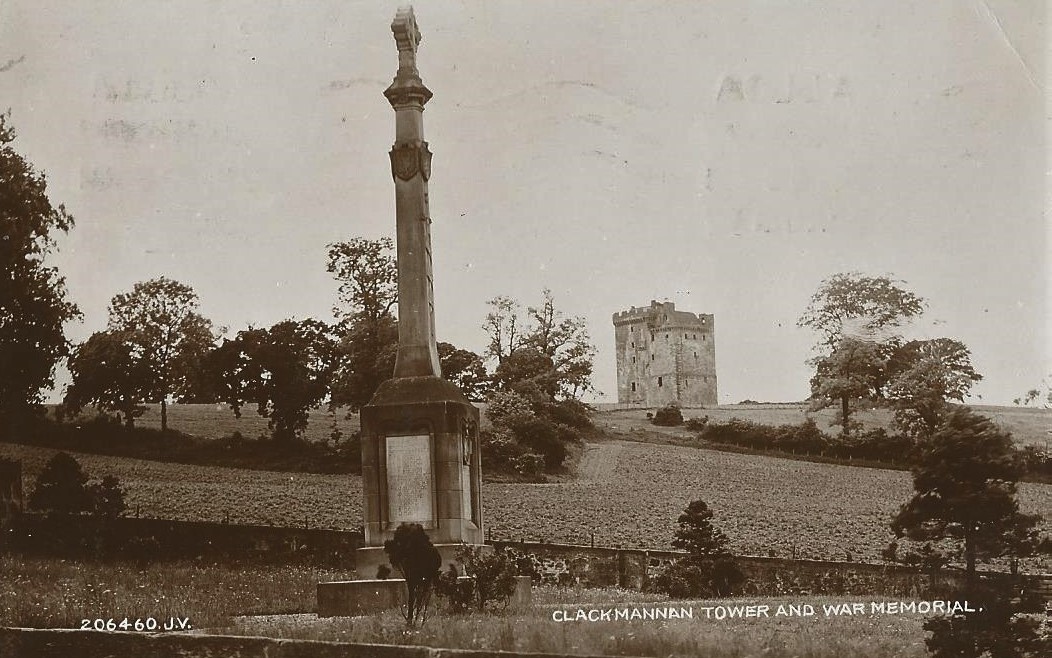
War memorial in place pre - World War II
The Memorial Architect
The war memorial was commissioned in 1919 by Clackmannan Parish Church, the contract being given to Robert Lorimar, a very renowned architect from Edinburgh, who prior to World War 1 was given many commissions to renovate ancient buildings including castles. During and after the war years he had many commissions for war memorials and designed many Commonwealth War Grave Commission Cemeteries for Prisoners of War who died in captivity. He also designed the Scottish National War Memorial at Edinburgh Castle. Robert Lorimar went on to be given a Knighthood and was eventually appointed a Knight Commander of the Order of the British Empire (KBE).
The War Memorial
The whole memorial is built of stone. The names are on panels of stone which were inserted after being engraved. The panels that the World War 1 names are engraved on is made of a harder stone, therefore the names are more easily readable than the names on the World War 2 panel and those on the plinth.
The bill for the memorial was £900 - equivalent to around £52,000 today.
The War Memorial was unveiled by Alexander Bruce, 6th Lord of Burleigh in 1921.
The organising committee would then have passed the maintenance and care of the memorial over to the local council. Sometimes the Royal British Legion Scotland and local volunteers help with maintenance and upkeep of memorials.
The Memorial is made up of several components as shown below:-

Clackmannan's War Memorial is of an unusual design as it is a medieval style cross on the very top of the Memorial. This cross is called the “Capital” which stands upon the column. The column is rectangular in shape and has a variety of engravings on it. Near the top of the column there is a shield with icon on each side of the column, there is also a 5th Shield on the North face of the pedestal.
The north face of the Column has the engraving of the Sword of Sacrifice, with a ribbon wrapped around it which has “1914 -1919” engraved on it, just below the Lion Rampant Shield. The Sword of Sacrifice is hoped to unite all those lost to war, no matter their faith or culture where a cross might not be so inclusive. It is an inverted sword which symbolises the handing over of power and victory, primarily to those who fight on for their cause. The other three sides of the columns have the names of Clackmannan people who did not return from WW1 and WW2 engraved into them. There are also names engraved on the pedestal upon which the column stands on as there was not enough room to include all the names of the men who didn't return from World War 2 on the column itself. This rectangular pedestal then sits upon a square pedestal.
Engravings
North Face:-
Top of Column:- Heraldry Shield
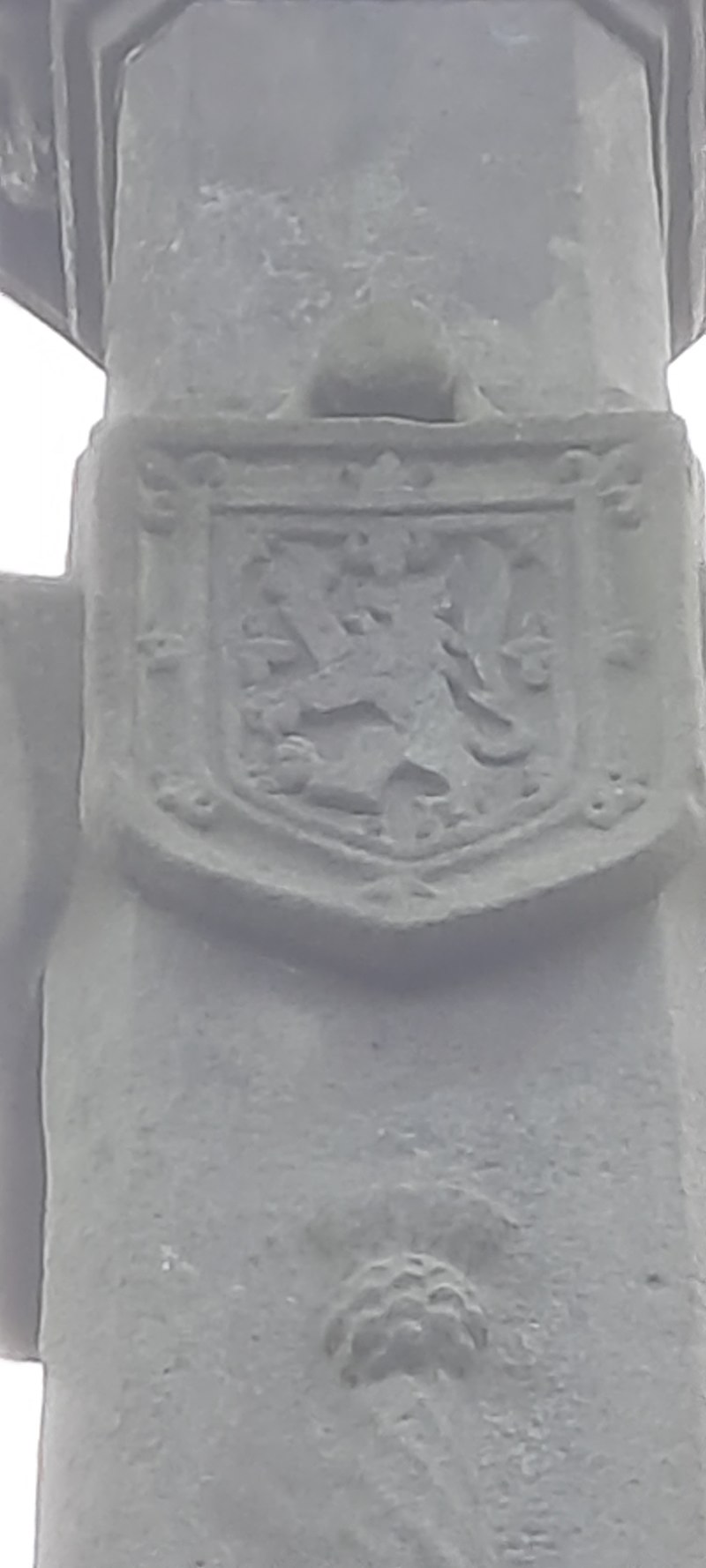
The Lion Rampant typically symbolises courage, nobility, royalty, strength, stateliness and valour, historically the lion has been regarded as the "king of beasts".
Middle of Column:- Sword of Sacrifice

Capital:- Medieval Cross
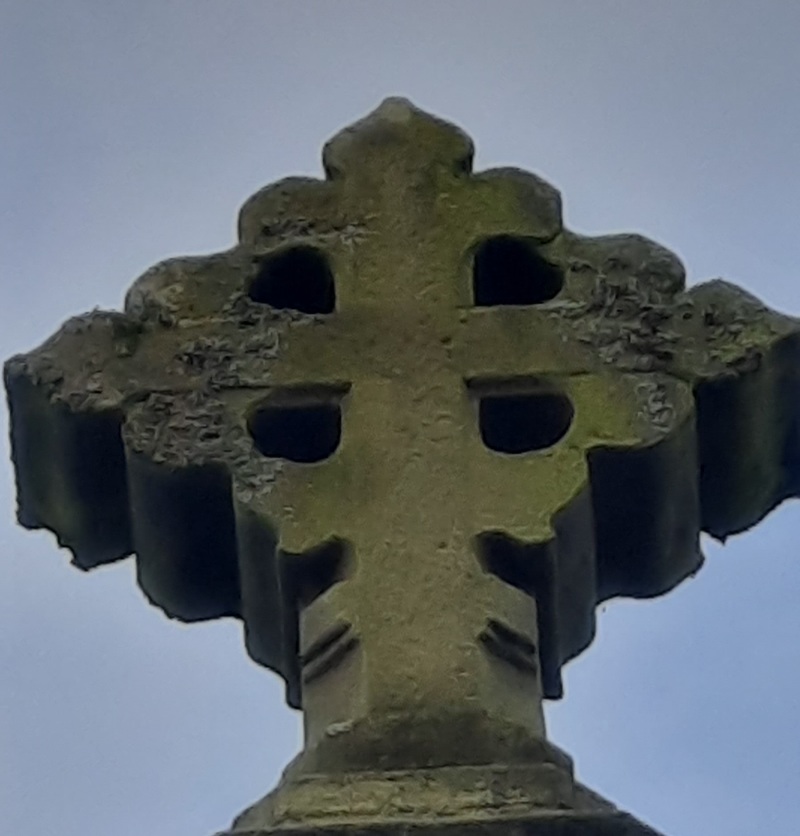
The Cross is said to be medieval in style as a tribute to Clackmannan's medieval history.
Top of North Pedestal Insert:- Saltire Shield

Rectangular Pedestal Insert:-
TO THE GLORY OF GOD AND IN MEMORY OF
THE MEN OF CLACKMANNAN WHO GAVE
THEIR LIVES IN THE GREAT WARS
Square Pedestal :-
THEIR NAME LIVETH FOR EVERMORE
East Face:-
Top of Column:- Shield with Pelican in her piety.
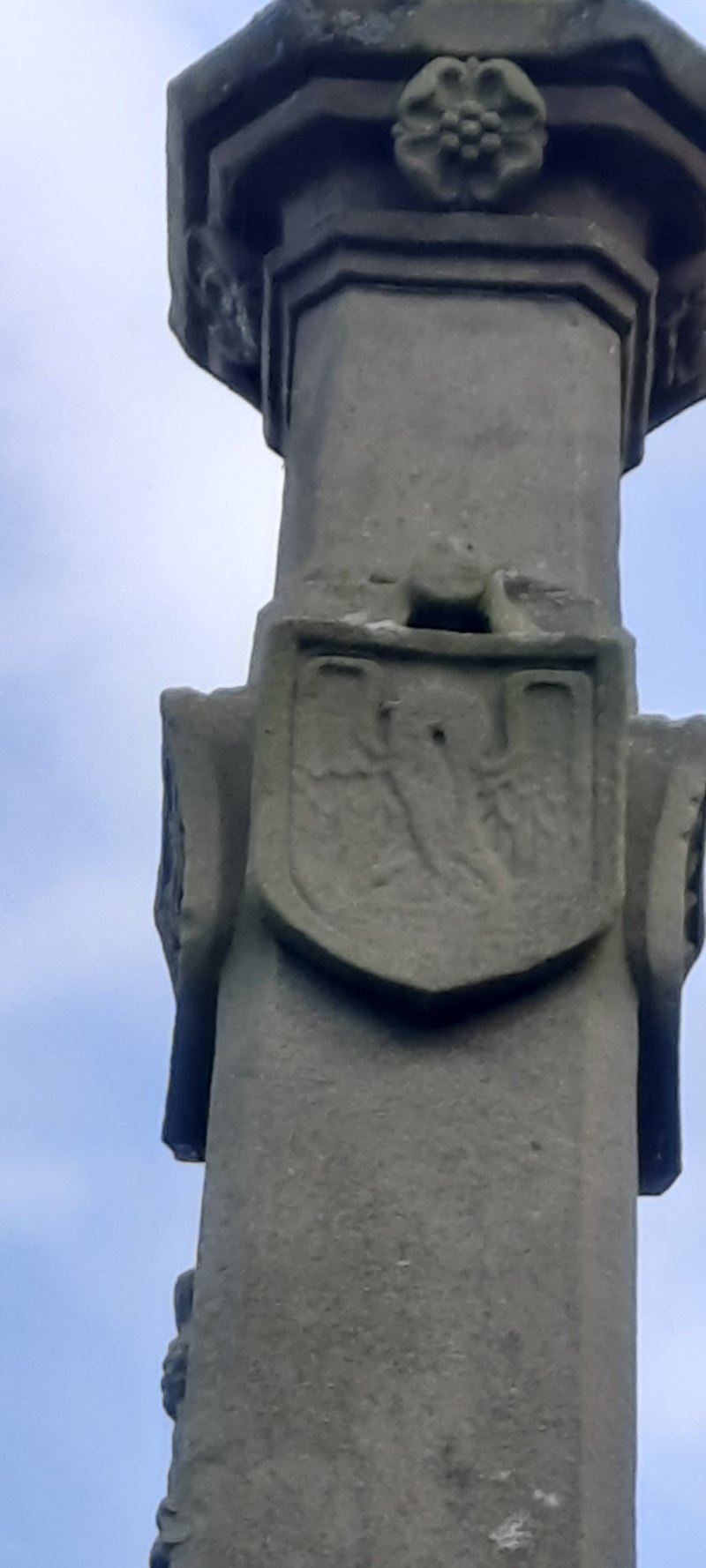
This shield shows a Pelican feeding her chicks. This is a Pre-Christian symbol meaning self-sacrifice and charity. There are 2 legends behind the symbol, 1 that the pelican pierces her breast to feed her chicks her own blood. The 2nd that she feeds her dying chicks her own blood to save them but in doing so dies herself.
Lorimer also included this symbol in the Scottish National War Memorial.
Rectangular Pedestal Insert:- The names of the men from World War 1
South Face:-
Top of Column:-Shield with Jesus Sacred Heart

It is believed this shield shows The Most Sacred Heart of Jesus which symbolises "God's boundless and passionate love for mankind”
Rectangular Pedestal Insert:- The names of men from World War 2
Square Pedestal:- The names of men from World War 2
West Face:-
Top of Column:- Shield with Scottish Royal Thistle
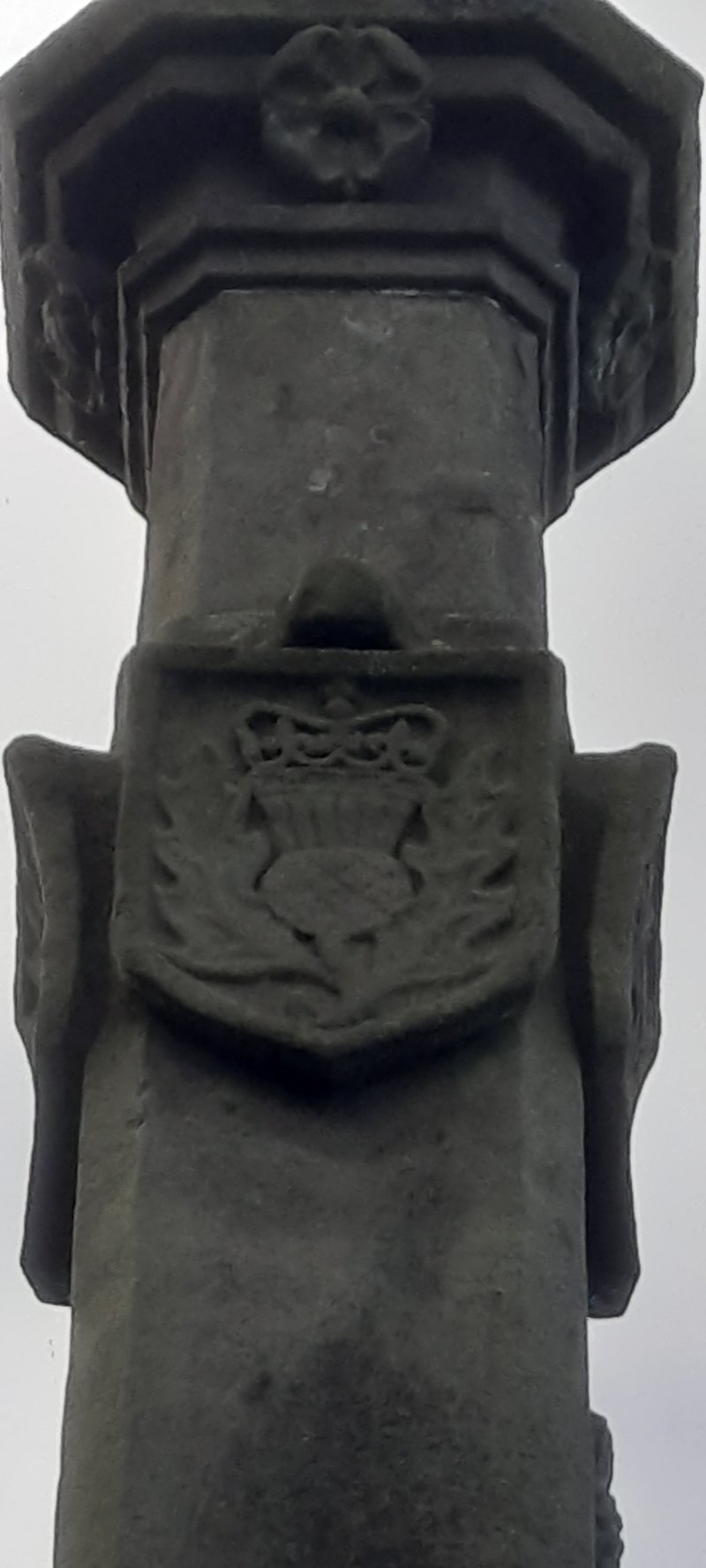
This shield shows the Scottish Royal Thistle, this became the sporran badge of The Highlanders, an Army Regiment made up of The Queen's Own Cameron Highlanders, The Seaforth Highlanders and The Gordon Highlanders. Some of the men named on the memorial were from these regiments.
Rectangular Pedestal Insert:- The names of men from World War 2
Square Pedestal:- The names of men from World War 2
Each Face also has a Poppy at the joint between the Cross (Capital) and the Column.
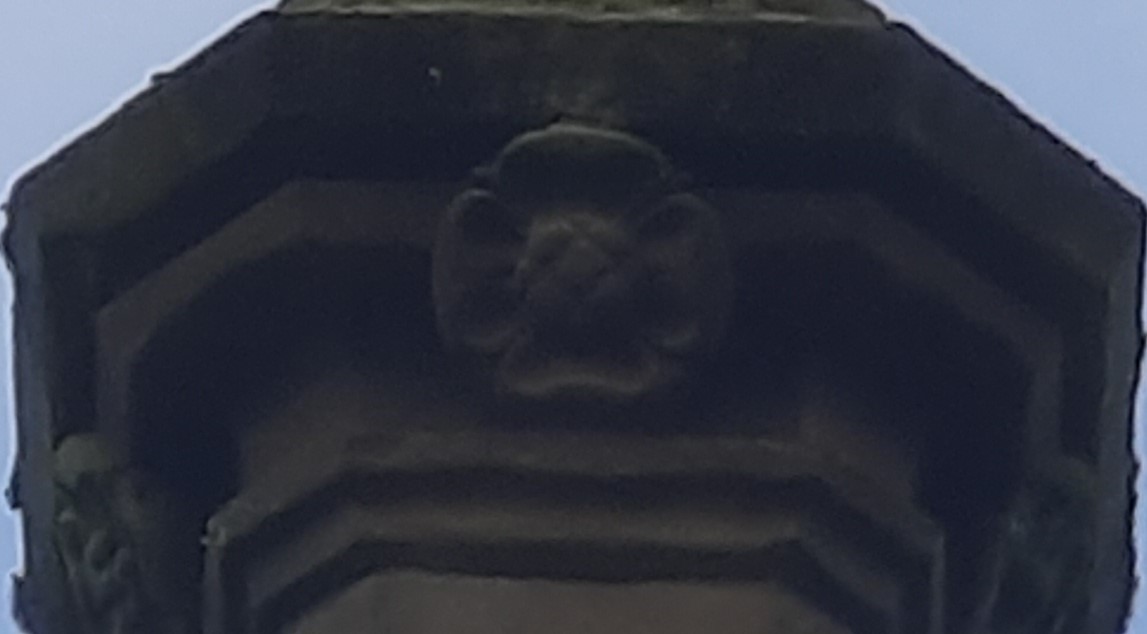
Since World War 1, when the poem “In Flanders Fields” was written by Lieutenant-Colonel John McCrae, who was inspired by the Poppies which grew in the horror of the battlefield, the poppy, especially the red poppy has been a symbol of remembrance and hope.
The Fallen
In alphabetical order, the people of Clackmannan who fell on foreign lands in both world wars. Where known, their rank is given.
Private Anderson A
Archibald RBF
Sergeant Major Barett J
Sergeant Bathgate W
Private Begg D
Binnie J
Private Birrell A
Private Birrell J
Private Birrell W
Private Bolton T
Brand A
Captain Bruce R (The Hon. Master of Burleigh)(Several medals, see below)
Lieutenant Burns F (Awarded Military Cross)
Private Burnside J
Private Clark A
Private Condiee T
Private Cook D
Private Cook J
Private Cook J
Private David R
Private Davis J
Lance Corporal Devlin M
Edwards W
Private Fogo J
Lance Corporal Forsyth A
Private Gardiner P
Private Gardiner P
Garmory R
Private Geddes J
Private Graham W
Hall JF
Lieutenant Harrower P (Awarded Military Cross)
Hepburn J
Hogg G
Private Howie J
Private Hughes J
Private Hunter W
Corporal Hutton A
Lieutenant Kershaw KRB
Private King J
Lindsay J
Mackie J
Private McBeath R
Sister McCallum M
McCard J
Private McDermont F
Private McDonald W
Private McFarlane J
McGhie JAJM
Corporal McLean H
Private McLean W
Private Mill J (Awarded Military Medal)
Private Mill R
Private Morrison W
Lieutenant Munro T
Private Nicholson T
Paterson J
Philip F
Powell JHC
Ramage A
Ramage G
Reid W
Russell CD
Captain Snaddon A
Private Sneddon A
Private Sneddon D
Private Somerville T
Tallis A
Tallis J
Sergeant Terry A
Lance Corporal Watson J
Private Wylie D
Young J
A well-known local family's loss

Right Honourable Robert Bruce (Master of Burleigh)
2nd Battalion Argyll & Sunderland Highlanders
Master Robert Bruce was a career solider, who fought in several campaigns including:-
1900-1902 The Boar War, where he won 2 medals and 5 clasps, those were:-
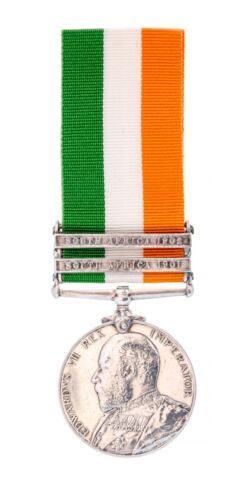
The King's Medal with 2 Clasps

The Queen's Medal with 3 Clasps
From 1910 to1914 he was seconded to the Egyptian Army, gaining the rank of Officer. Where in 1912 he won a King's Sudan Medal with clasp for fighting in the Sudan War.

The King's Sudan Medal with 1 Clasp
In 1913 he was an Intelligence officer to the forces accompanying the Joint Commission sent to delimit the boundary between the Sudan and Uganda. He was awarded the Order of Medjidie 4th Class. This was a Military and Knightly Order of the Ottoman Empire. This was awarded for distinguished service by Sultan Abdulmecid.

Order Of Medjidie 4th Class
1914 Captain Bruce was deployed with the British Expeditionary Force to France and Belgium.
Captain Bruce was a great favourite with his men, he is said to have ordered the company cook to give him the same portion sizes as the rest of the company as they had been giving him larger “Officer” portions. He is said to have been an extremely brave solider, as one recollected: -
"He was too brave, if anything. He simply wanted to be at 'em - and at them he went. I don't know where his sword was, but he hadn't it when I saw him. But he had a rifle with fixed bayonet just like the rest of us. I saw him being wounded, but he fought on gamely till he and his party of brave fellows were cut off and surrounded."
Another solider said: -
“Captain Bruce, snatched up a dead man's rifle and rushed to the firing line. I believe he is a prisoner of war. How it cheered the men to see this gallant officer join them in the fight”
Captain Bruce should also have received various medals for being an active solider overseas. These may include the “Mons Star”, “British War Medal” and “Allied Victory Medal” sadly these would have been presented to his father Alexander Bruce, Lord Balfour of Burleigh.
The Birrell Family
The Birrell family were a family of eight children. Their mother was Clackmannan born and their father had moved through from Fife. They lived in Kirk Wynd and the father, Alexander, was a Quarryman. Like many families during World War 1 several of their boys went to war, the information I have for those is below.
William Birrell
D.O.B 1892 in Clackmannan
Private
9th Highland Light Infantry
K.I.A 25/09/15
France and Flanders
Awarded the British War Medal and Victory Medal
Archibald Birrell
D.O.B 1893 in Clackmannan
Private
Argyll and Sutherland Highlanders
Disability Discharged 9/11/18
He married in 1923
Died in Alloa in 1963
Should have been awarded the British War Medal and Victory Medal (can't find any evidence, but anyone who actively served during World War 1 should have received these.
Alexander Birrell
D.O.B 1895 in Clackmannan
Private
Gordon Highlanders
K.I.A 18/04/1917
France and Flanders
Awarded the British War Medal and Victory Medal.

The British War Medal
All military personnel who served in a theatre of war received this medal after World War 1 was finished. Sadly, for many the medal was given to their next of kin.
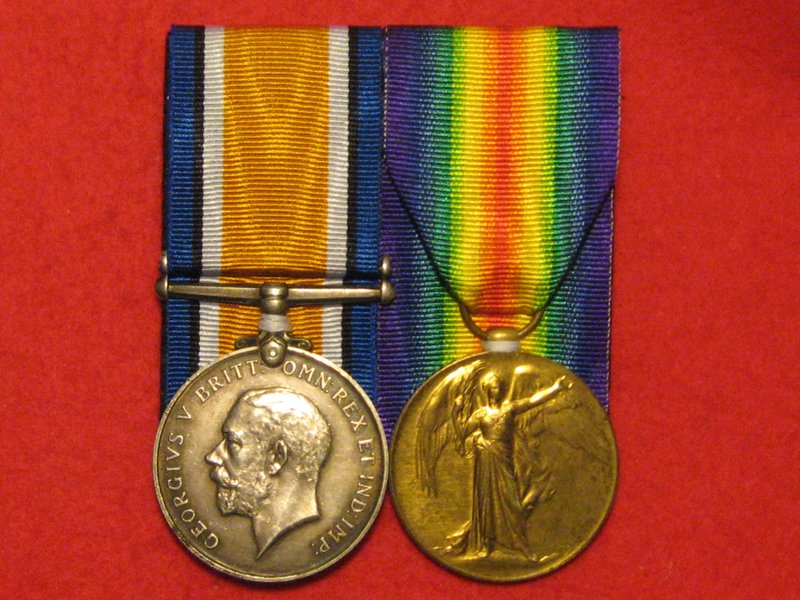
The Victory Medal
All military personnel who actively served would have received this medal once the war was won.
Sister Margaret McCallum
The only female on Clackmannan's War Memorial is Sister Margaret McCallum. Sister McCallum was a Clackmannan District Nurse, who originally came from Helensburgh.
She was one of 151 Scottish District Nurses who volunteered in World War 1 to provide Nursing Services should the War Office or Admiralty call upon them to work in any hospital which was being organised and approved by the Red Cross. She volunteered with the Red Cross as a Qualified Nurse and worked at the Anglo-Russian Hospital in Petrograd (St. Petersburg), which had 200 beds in it.
The hospital was known as “the (British) Empire's gift to our Russian Allies” and operated between 1915-1918. The hospital was closed in February 1917 and staff evacuated to England when the Russian Revolution started.
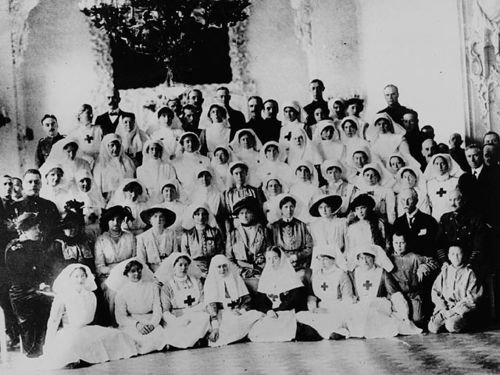
Picture taken at the Anglo-Russian Hospital
when the Russian Empress and two of her daughters
officially opened in the hospital in May 1916
After she left Petrograd, Sister McCallum spent some time working at Homeville Auxillary Military Hospital in Headcorn near Maidstone, Kent.
She then joined a Red Cross mission to Czechoslovakia which was battling Spanish Flu and Typhoid Fever at the time. The team that went over established First Aid Stations, Refreshment Stations, A Children's Home and an Epidemic Hospital. They also assisted the hungry, orphans, mothers, children and the elderly in any way they could.
The Red Cross Mission established their headquarters in Tursovka as the spread of the infections were horrendous here. They took over a local school where they established an epidemic hospital with 230 bedded disinfection units, they also had a boiler which helped with cleanliness and therefore helped to decrease the risk of infection. The Czechoslovakian Army and local women helped at the hospital, and they also had a cook.
Sister McCallum was involved in setting up medical stations in an attempt to get the Spanish Flu and Typhoid Fever under control and stop it spreading in the weakened population who were under nourished. Her stations gave the starving people brought to them from distant villages by Slovak soldiers, a serious of baths to disinfect them.
Some of the people had never seen a bath before and were scared of them so would howl and scream and fight not to go into them. One nurse said of Sister McCallum “Miss McCallum small though she was, was a wonder at bathing the people and a most devoted worker”.
The staff at these medical stations were all worried about being bitten by insects which carried the typhoid fever. To combat this, they all wore the full local military uniform of coats, trousers, caps and high boots, but Sister McCallum refused and wouldn't wear the uniform. Unfortunately, this led to her being bitten probably by a louse and contracting Typhoid Fever.
By the time the Spanish Flu and Typhoid Pandemics were under control, 450 people had died. Sadly, Sister McCallum died on the 30th of September 1919. She is buried in Tursovka.
The mission Sister McCallum was on led to the provision of proper medical services in the region and to this day the local people have not forgotten Sister McCallum's sacrifice and they still honour her each year.
Her colleagues from Clackmannan clearly didn't forget about her either, as they erected the plaque pictured below in her honour, which was displayed in Clackmannan Parish Church.

You can find out some more on this at www.Roll-of-Honour.com
